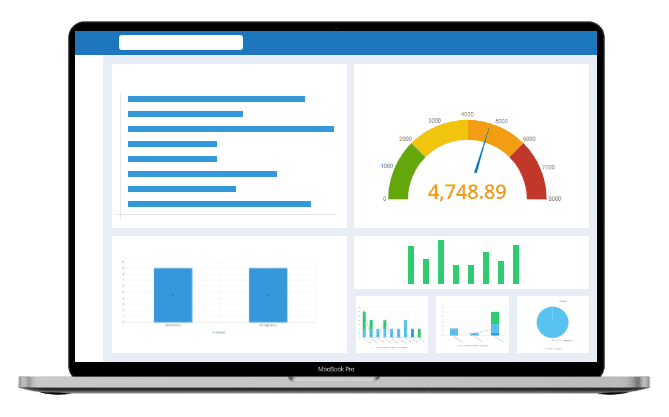Root Cause Analysis Software
Intelex Root Cause Analysis software reduces operational risk and improves process efficiency by analyzing incidents, discovering root causes, and then addressing the source of the problem to prevent their re-occurrence.
- Capture all incident data in one SaaS solution.
- Save time and money by preventing problems.
- Streamline RCA methodologies such as Pareto, Fishbone, 5-Why's and more.
- Integrate RCA findings directly into your EHSQ strategy.

Trusted by Leading Organizations Around the World





Intelex Root Cause Analysis Software Gets to "Why" Faster.
Intelex Root Cause Analysis software delivers a SaaS solution that delivers all the tools and
methodologies that are required to identify, fix, and prevent problems with your
company’s processes, products, and services.

Key Root Cause Analysis Software Features
Enterprise grade root cause analysis tools and proven methodologies
ensure a higher level of confidence in your identified causes, solutions, and CAPA plans.

Tailored RCA Methodologies
Intelex Root Cause Analysis software delivers integrated root cause analysis tools including basic checklists, fishbone (Ishikawa), TapRoot, 5-Why's and gap analysis so you can get to why your way.

Integrated Workflow
The root cause of an incident does not always reside within the four walls of your organization. Intelex Root Cause Analysis software provides integrated workflow and management tools to streamline evidence collection for faster answers.

Configurable Dashboards and Reports
Intelex Root Cause Analysis software employs configurable reports and customizable dashboards to easily communicate findings across all stakeholders and make sure everyone is on the same page.
Root Cause Analysis Software Frequently Asked Questions
A root cause is the most basic underlying issue that resulted in an incident or nonconformance. Root Cause Analysis (RCA) is a structured methodology that uses different tools and techniques to identify the root cause and answer three critical questions:
- What happened?
- Why did it happen?
- How do we prevent it from happening again?
Identifying and eliminating the root cause of an incident or nonconformance through RCA and process improvement should permanently prevent re-occurrence.
There is a proven multi-step process for performing a root cause analysis. The basic steps are:
- Define the problem – Determine exactly what the problem is and how it affects your processes, products, or services.
- Find possible causes – Brainstorm and make a list of all potential causes and how they may result in an incident or nonconformance.
- Identify the root cause – Use one or more Root Cause Analysis methodologies to discover the most basic, fundamental cause of the identified problem.
- Propose solutions – Create a list of possible solutions that address the root cause by fixing it in the short-term, while preventing it from reoccurring in the long-term.
- Take action – Implement the solutions based on their effort and effect. Start with the easiest solutions that have the highest impact and then move to the more difficult solutions.
- Monitor the results – Once you have implemented one or more solutions, pay attention to the product, process, or service to see if the original problem reoccurs.
There are several effective methods for analyzing and finding the root cause of an incident or nonconformance. Some of the best methods include:
- A Pareto Analysis, first developed by an early 20th century Italian engineer, follows the principle that 80% of all outcomes (i.e., incidents or nonconformances) can be attributed to only 20% of causes. This 80/20 rule charts the most common causes of an issue in a histogram in descending order along with a line graph showing their cumulative totals. This simple quantitative visualization helps you identify which issues cause the most problems.
- A fishbone or Ishakawa diagram, developed by a Japanese professor in the 1960’s, is used to analyze more complex problems and find their root cause. It identifies and sorts possible causes into various categories, which are then enhanced with addition information related to that cause. This continues until a root cause is determined.
- The 5 Whys, created by Toyota’s Taiichi Ohno in the 1950’s, is a non-quantitative method for analyzing a particular problem. The 5-Why’s are easy to understand, investigators repeatedly ask “Why,” and each answer becomes the basis for the next “Why “question. Repeat the question five times consecutively, and you should be able to identify the root cause.
- Failure mode and effects analysis (FMEA) originated in the US military in the 1940’s. It is commonly used in process analysis and is an effective tool for identifying failures in a process, product, or service. FMEA uses a chart to identify and prioritize “Failure Modes” such as incidents or nonconformances, together with an “Effect Analysis” which calculates the risk and consequences of those incidents and nonconformance.
- A scatter plot or scatter diagram is a simple quantitative approach to discover the relationship between two sets of data. This is a common statistical tool for visualizing correlation that is often used to support non-quantitative RCA approaches such as Fishbone diagrams or 5-Why analysis.
Root Cause Analysis (RCA) software simplifies and automates the process for discovering the issues that cause incidents and nonconformances, and then streamlines process improvement to prevent their re-occurrence. A centralized RCA solution enables effective company-wide Root Cause Analysis by delivering all the tools and methodologies that are required to identify, fix, and prevent problems with your company’s processes, products, and services. The best Root Cause Analysis software is integrated into comprehensive EHS Management solutions so that all RCA findings are automatically available for Incident Management, CAPA (Corrective and Preventative Action) Management, Audit Management and other key EHS functions.
Root Cause Analysis software reduces operational risk and improves process efficiency by analyzing incidents, discovering root causes, and then addressing the source of the problem. It simplifies root cause analysis company-wide by recording all incident and cause analysis data in a centralized, web-based location where it is easily analyzed, reported, audited, and shared through integrated workflows, reports and notifications. Root Cause Analysis software helps avoid future incidents and nonconformances by implementing preventive measures to counter risk across all areas of operations including health and safety, supply chain, engineering, and quality.
Root Cause Analysis Drives Successful EHSQ Management
Leverage the breadth and depth of Intelex SaaS solutions to help you meet and exceed your EHSQ program goals.

Streamline the collection of data and capture the evidence required to generate insights and get answers.
Simplify data analysis and manage follow-up tasks to correct, prevent and comply.
Keep everyone in the loop and share best practices for continuous improvement.
 1 877 932 3747
1 877 932 3747



